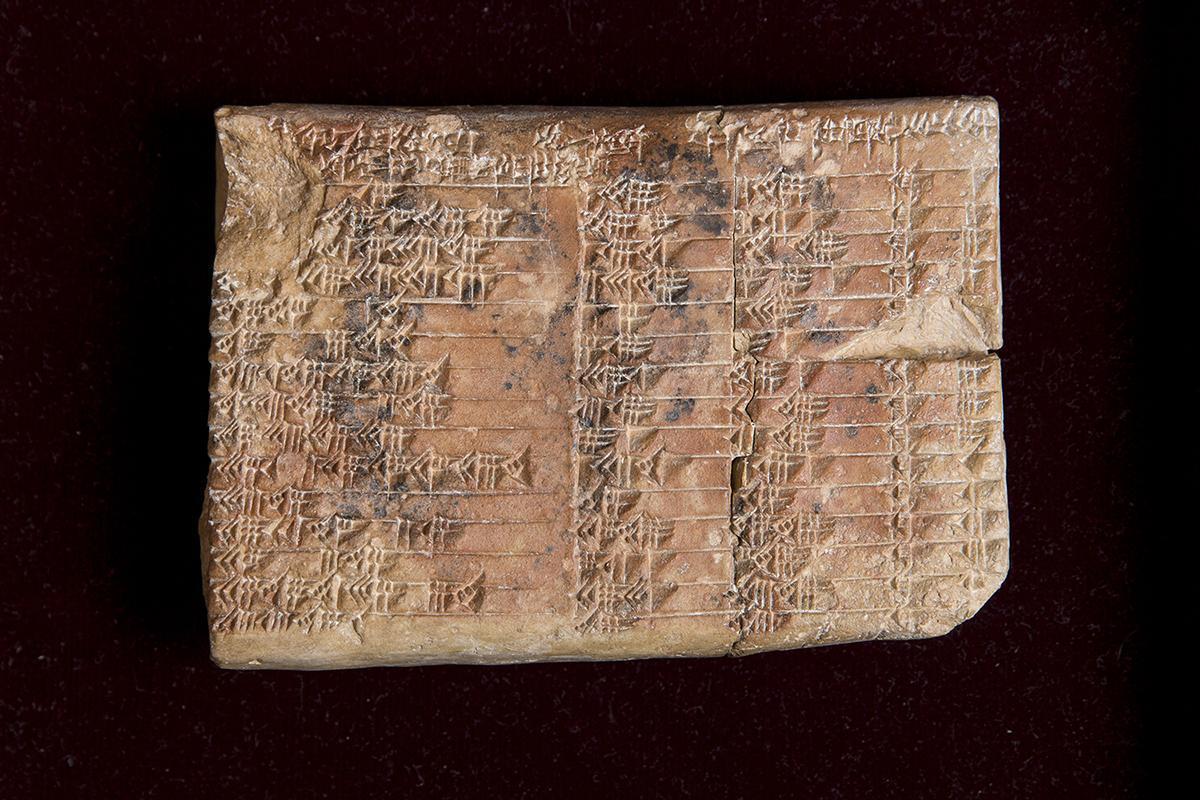Babylonians developed trigonometry 'superior' to modern day version 3,700 years ago
They also beat the Ancient Greeks to it, according to Australian academics

Your support helps us to tell the story
From reproductive rights to climate change to Big Tech, The Independent is on the ground when the story is developing. Whether it's investigating the financials of Elon Musk's pro-Trump PAC or producing our latest documentary, 'The A Word', which shines a light on the American women fighting for reproductive rights, we know how important it is to parse out the facts from the messaging.
At such a critical moment in US history, we need reporters on the ground. Your donation allows us to keep sending journalists to speak to both sides of the story.
The Independent is trusted by Americans across the entire political spectrum. And unlike many other quality news outlets, we choose not to lock Americans out of our reporting and analysis with paywalls. We believe quality journalism should be available to everyone, paid for by those who can afford it.
Your support makes all the difference.The Ancient Babylonians knew about a form of trigonometry more advanced than the modern-day version – about 1,000 years before its supposed invention by the Ancient Greeks, academics in Australia say.
The astonishing claim is based on a 3,700-year-old clay tablet inscribed with a table of numbers.
Known as Plimpton 322, it is already known to contain evidence that the Babylonians knew Pythagoras’ famous equation for right-angled triangles, long before the Greek philosopher gave his name to it.
And researchers at the University of New South Wales (UNSW) have claimed it also shows the Babylonians developed a highly sophisticated form of trigonometry – the system of maths used to describe angles that has tortured generations of school pupils with sine, cosine and tangent.
The city of Babylon in Mesopotamia, an early cradle of human civilisation in what is now Iraq, was famed for its Hanging Gardens, said to be one of the Seven Wonders of the ancient world.
And mathematician Dr Daniel Mansfield suggested its people developed trigonometry to help their architects design the city’s major buildings.
“Our research shows it’s a trigonometric table so unfamiliar and advanced that in some respects it’s superior to modern trigonometry,” he said.
“We’ve discovered these lines represent the ratios for a series of right-angled triangles ranging from almost a square to almost a flat line.
“This makes Plimpton 322 a powerful tool that could have been used for surveying fields or architectural calculations to build palaces, temples or step pyramids.”
Dr Mansfield explained that the Babylonians’ system of counting enabled them to perform complicated calculations more easily that mathematicians today.
“The Babylonians unique approach to arithmetic and geometry means this is not only the world’s oldest trigonometric table, it’s also the only completely accurate trigonometric table on record,” he said.
“Why? It all comes down to fractions. We count in base 10 which only has two exact fractions, one half, which is 0.5, and one fifth, which is 0.2.
“That’s problematic if you want to divide. For example, one dollar divided by three is 33 cents with one cent left over.
“The Babylonians counted in base 60, the same system we use for telling time. This has many more exact fractions.
“It doesn’t sound like much, but this allowed them to do a lot more exact division. One hour divided by three is 20 minutes – exactly.
“By using this system, the Babylonians were able to make calculations that completely avoided any inexact numbers, thereby avoiding any errors associated with multiplying those numbers.”
And the Babylonian system might actually have lessons for science today, he claimed.
“With this greater accuracy we think this system has enormous potential for application in surveying, computers and education,” Dr Mansfield said.
“It’s rare that the ancient world teaches us something new. After 3,000 years, Babylonian mathematics might just be coming back into fashion.”
Plimpton 322 was discovered in southern Iraq by the early 1900s by archaeologist, diplomat and antique dealer Edgar Banks, who was the inspiration for the character of Indiana Jones.
The tablet has numbers written in cuneiform script in four columns and 15 rows.
There were suggestions in the 1980s that the numbers showed knowledge of trigonometry, but this had been dismissed more recently.
But Dr Mansfield said their research revealed it was a “novel kind of trigonometry” that was based on ratios, rather than angles and circles.
“It is a fascinating mathematical work that demonstrates undoubted genius,” he said.
One problem with Plimpton 322 is the left-hand edge is broken.
The UNSW researchers presented mathematical evidence that it originally had six columns, rather than four, and 38 rows, not 15.
They believe ancient scribes could have generated numbers using the tablet, which they suggest was a teacher’s aid to checking students’ quadratic equations.
Hipparchus, a Greek astronomer who lived in about 120 BC, is traditionally regarded as the founder of trigonometry.
But Professor Norman Wildberger, who worked with Dr Mansfield, said: “Plimpton 322 predates Hipparchus by more than 1,000 years.
“It opens up new possibilities not just for modern mathematics research, but also for mathematics education. With Plimpton 322 we see a simpler, more accurate trigonometry that has clear advantages over our own.
“A treasure-trove of Babylonian tablets exists, but only a fraction of them have been studied yet. The mathematical world is only waking up to the fact that this ancient but very sophisticated mathematical culture has much to teach us.”
A paper about the research was published in Historia Mathematica, the official journal of the International Commission on the History of Mathematics.
Join our commenting forum
Join thought-provoking conversations, follow other Independent readers and see their replies
1Comments